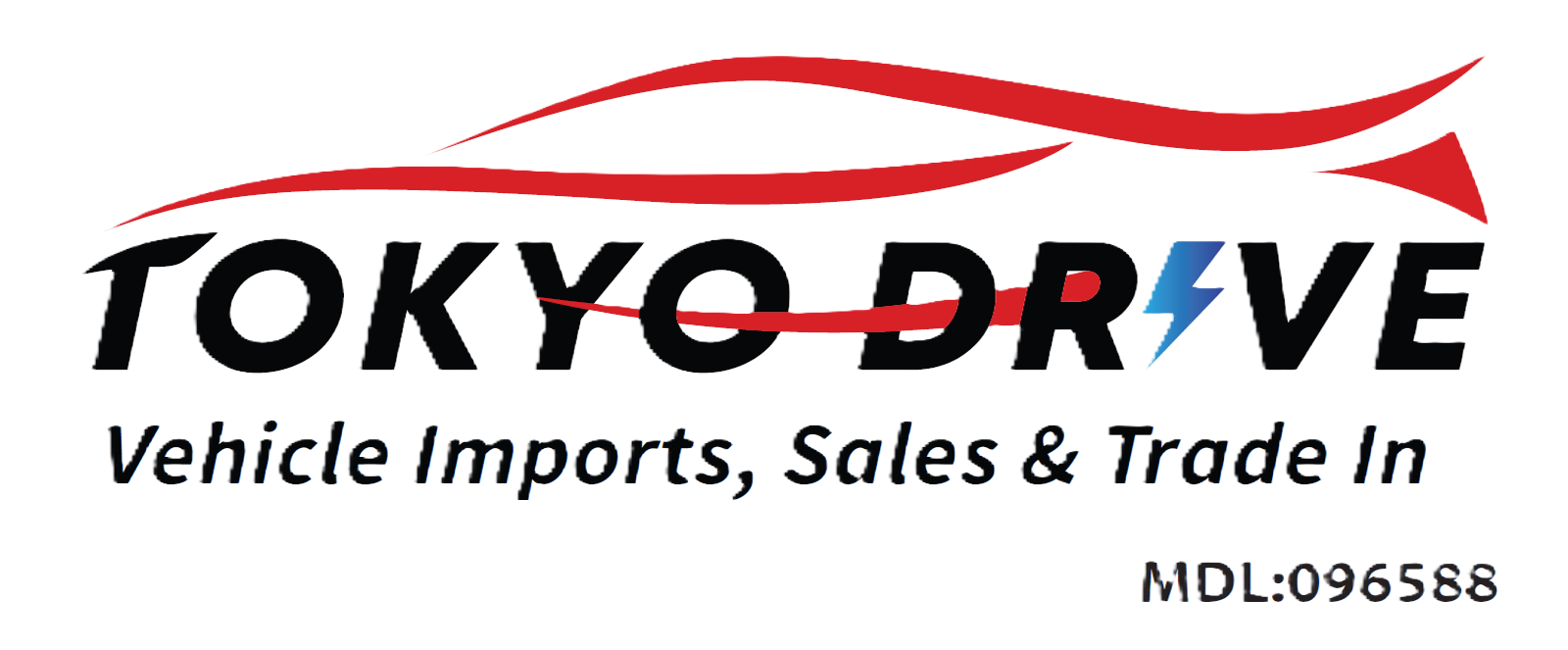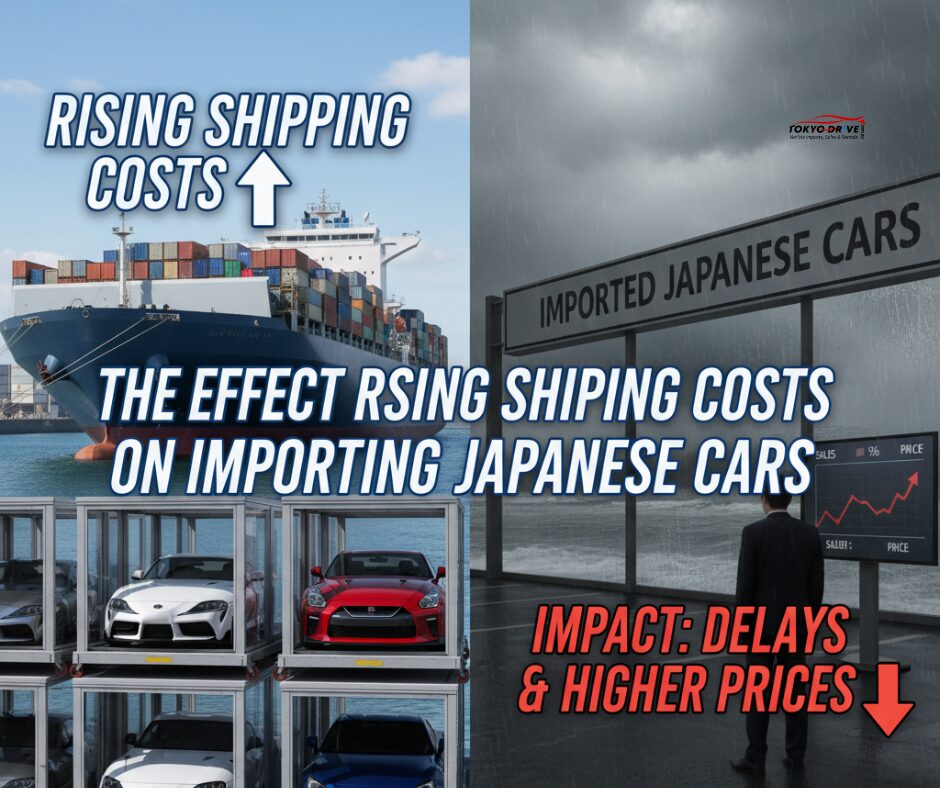For decades, Australia’s love affair with Japanese cars has shaped our automotive culture. From sleek Nissan Skylines and sporty Toyota Supras to efficient hybrids and practical kei-cars, Japanese vehicles have always been prized for their quality, performance, and reliability. However, in 2025, one factor is making JDM imports more expensive and more challenging — rising shipping costs.
At Tokyo Drive, we believe in transparency and education. Whether you’re a car enthusiast, dealer, or first-time importer, understanding how shipping costs affect your budget and choices is crucial. Let’s explore how freight inflation is changing the economics of Japanese car imports and what you can do to minimize the impact.
1. Why Shipping Costs Are Rising in 2025
Shipping costs have always fluctuated, but several global and regional factors have caused them to climb steadily in the past two years:
-
Fuel and energy price increases: Higher fuel rates mean higher freight surcharges for ocean carriers.
-
Global supply chain congestion: Delays at major ports in Japan and Australia have pushed up shipping schedules and added holding charges.
-
Container shortages: The post-pandemic logistics imbalance continues, increasing the cost of RoRo (Roll-on Roll-off) and container shipping.
-
Currency exchange rates: A weaker Australian Dollar against the Japanese Yen has amplified overall import costs.
These factors combined mean that a shipment that once cost AUD 1,800–2,200 may now exceed AUD 3,000–3,500 per vehicle — and that’s before insurance, port fees, and compliance charges.
2. The Hidden Domino Effect of Rising Freight Costs
Many buyers assume that higher freight costs simply add a few hundred dollars to their total, but in reality, the effect is exponential.
Here’s why:
-
Import Duty and GST are calculated on the total landed cost, which includes shipping and insurance.
-
So, when shipping increases, taxes increase too — effectively creating a double hit.
-
For example, a AUD 25,000 car with AUD 2,000 shipping has a total taxable base of AUD 27,000. If shipping rises to AUD 3,500, the GST and duty are calculated on AUD 28,500 — adding hundreds more in taxes.
In other words, freight inflation doesn’t just affect the logistics bill — it impacts your entire cost structure, from taxes to compliance.
3. How Importers Like Tokyo Drive Are Adapting
As one of Australia’s trusted import specialists, Tokyo Drive continuously tracks shipping trends to keep our clients informed and protected from sudden cost jumps.
Here’s how we’re adapting to the changing market:
A. Strategic Port Selection
We optimize routes and destination ports based on availability, handling time, and customs efficiency. This ensures faster clearance and minimal storage charges.
B. Container Consolidation
By grouping multiple vehicles in shared containers, we reduce per-vehicle freight charges — an efficient solution for dealers and bulk buyers.
C. Transparent Cost Breakdown
Tokyo Drive provides a full landed cost estimate, including freight, import duty, GST, compliance, and registration. No hidden fees, no surprises — just clarity from day one.
D. Long-Term Partnerships
We’ve built strong relationships with Japanese exporters, shipping lines, and local agents to negotiate competitive rates and reliable service for our customers.
4. How Rising Costs Affect Buyers and Enthusiasts
For car enthusiasts and private importers, these rising costs can reshape decision-making in several ways:
1. Vehicle Choice
Buyers are now leaning toward smaller, lighter vehicles like kei cars, hybrids, and compact sedans because they cost less to ship. Larger SUVs, performance sedans, or vans have higher freight and tax implications due to their weight and dimensions.
2. Import Timing
Some enthusiasts are postponing imports, waiting for exchange rates or freight prices to stabilize. However, this strategy can be risky — car prices in Japan are also rising due to local demand and limited supply.
3. Destination Planning
Choosing the right arrival port in Australia — such as Brisbane, Melbourne, or Fremantle — can affect customs fees and compliance costs.
4. Shift Toward Local Stock
As freight prices increase, some buyers choose to purchase JDM cars already landed in Australia through importers like Tokyo Drive. This eliminates overseas freight uncertainty and ensures the car is already SEVS-approved and ready for registration.

5. Tips to Manage or Reduce Shipping Costs
While global freight trends are beyond anyone’s control, you can take several proactive steps to manage the cost impact on your next import.
✅ Compare Freight Options
Ask your importer about both RoRo and container shipping. RoRo is typically cheaper, but container shipping offers better protection and is ideal for higher-value cars.
✅ Consolidate Shipments
If you plan to import more than one vehicle (or parts), consolidating them in a single container can significantly cut your cost per car.
✅ Track Exchange Rates
Even small fluctuations in the AUD/JPY exchange rate can change your total bill. Timing your purchase when the Australian Dollar is stronger can offset part of the shipping rise.
✅ Avoid Port Delays
Ensure your paperwork and import approvals are complete before the car arrives to avoid extra storage or demurrage fees.
✅ Choose a Transparent Import Partner
Work with an importer who provides a detailed cost breakdown upfront — including potential freight surcharges. Tokyo Drive’s approach ensures every buyer knows exactly what they’re paying for.
6. The Broader Market Impact
Rising freight rates don’t only affect individuals — they influence the entire JDM import industry.
-
Dealers must adjust their pricing strategies to maintain margins.
-
Workshops and compliance centers face scheduling delays as shipments arrive slower or in bulk.
-
Consumers see fewer budget-friendly options as total costs rise.
However, one positive outcome is that these pressures are encouraging greater efficiency and transparency within the import industry. Importers now have to justify their prices more clearly, and buyers are becoming better informed about the true cost of vehicle ownership.

7. Looking Ahead: What’s Next for JDM Imports?
The good news is that the demand for Japanese imports in Australia remains strong and growing. Enthusiasts still seek the performance, build quality, and unique style of JDM vehicles that local manufacturers can’t match.
While shipping costs are unlikely to return to pre-pandemic levels anytime soon, new logistics technologies, bulk shipping agreements, and improved port management could gradually ease some pressure.
Tokyo Drive continues to stay ahead by monitoring freight rates, providing up-to-date cost estimates, and ensuring customers get the best value possible — even in a challenging market.
8. Final Thoughts
The rising cost of shipping may be reshaping the way Australians import Japanese cars, but it hasn’t stopped the passion for JDM vehicles. With smart planning, transparent partnerships, and the right importer, you can still bring your dream car home without unnecessary surprises.
At Tokyo Drive, our mission is simple:
To make Japanese car importing smooth, transparent, and affordable — even when global markets shift.
Whether you’re looking for a classic Skyline, a hybrid Prius, or a rare sports coupe, our team can guide you through every step — from auction bidding in Japan to keys-in-hand in Australia.
Stay informed. Stay passionate. Drive JDM — the Tokyo Drive way.



